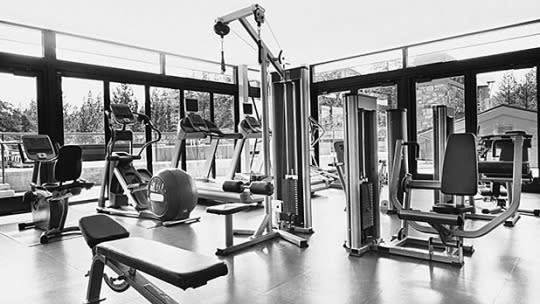The 4 Worst Machines in the Gym

(Photo Courtesy of Trinette Reed / Getty Images)
The biggest problem with gym machines: They follow a fixed path and make no accommodations for different body types, mobility issues, and range-of-motion limitations. In fact, they can make these issues worse by destabilizing joints and loading muscles with unbalanced forces. What’s more, machines won’t engage opposing muscles — so, during a chest press, this would be your upper back — to balance the forces on your body, leading to additional stress on muscles and joints. We only have two situations when you should consider hitting machines: If you’re new to strength training (in which case using machines for a few weeks will help familiarize your body with the movement patterns); or if you’re an advanced weightlifter seeking isolated hypertrophy. For everyone else, avoid these four machines at the gym.
Related: The Only 8 Moves You Need to Be Fit
Leg Extension
Those with chronic knee issues in particular should stay away from this machine. The leg extension loads the joint with stress and shear forces (which pulls up on your knee cap) because the hamstrings aren’t engaged to balance the weight. Leg extensions target your quadriceps, which attach to the knee and crosses the hip, but when they get short and tight, a move like leg extensions can wreak havoc on the knee joint.
Do this instead: Trap bar deadlifts. They’ll hit the quads, and because the hamstrings and glutes contribute to the lift, they’ll reduce knee stress. The exercise also has less shearing forces on the knee because the force angle is coming from below, and not in front.
Related: 8 Exercises to Boost Sexual Performance
Leg Press
Many people with back pain or injury gravitate to the leg press because the back remains fixed, supported, and unweighted. But look at the position for the leg press: It’s a squat performed while leaning the upper body forward so the torso would face the floor. Now the hip flexors (which directly attach to the spine) are held in their shortest position, meaning that at no time during the lift do they have a chance to extend or fully relax. The result? Short, tight hip flexors — a problem most of us have from sitting all day — pull on the lumbar spine and create additional stress.
Do this instead: Use split-stance leg exercises like split squats and lunges. The split stance will open the hips and allow for a vertical torso to help diffuse loads placed on the low back.
Related: 4 Essential Leg Moves You Never Do
Oblique Twist
You don’t need to be injured or imbalanced to steer clear of this one. The twisting movement of this machine encourages an unsafe range of motion and allows a lifter to twist using the wrong segments of the spine. Plus, you’re not training your core for functional strength. The core’s prime function is to resist twisting, not create movement.
Do this instead: Unilateral plank variations. Lift one arm or leg off the ground while planking. This challenges the body to resist rotation. To take things up a notch, try the plate transfer plank, seen here.
Related: 6 Moves That Will Help You Get That 6-Pack
Hip Adduction/Abduction
Working your inner and outer thighs can prevent injuries and boost stability, but this machine engages them from a seated position, which offers no benefit — you need these muscles when you’re standing, not sitting. Plus, the machine trains the muscles as isolated movers, not a stabilizing group that works with your whole leg. Worse, using bad technique on this exercise can create the kind of hip-socket stress that leads to injury.
Do this instead: Lateral plane leg exercises like Cossack squats and side lunges. You’ll incorporate the inner and outer thighs in harmony with the rest of the lower leg, so they can better do their job of stabilizing the leg during unilateral exercises like single-leg deadlifts or squats.
By Lee Boyce
More from Men’s Journal:
Why Healthy Foods Can Make You Fat
